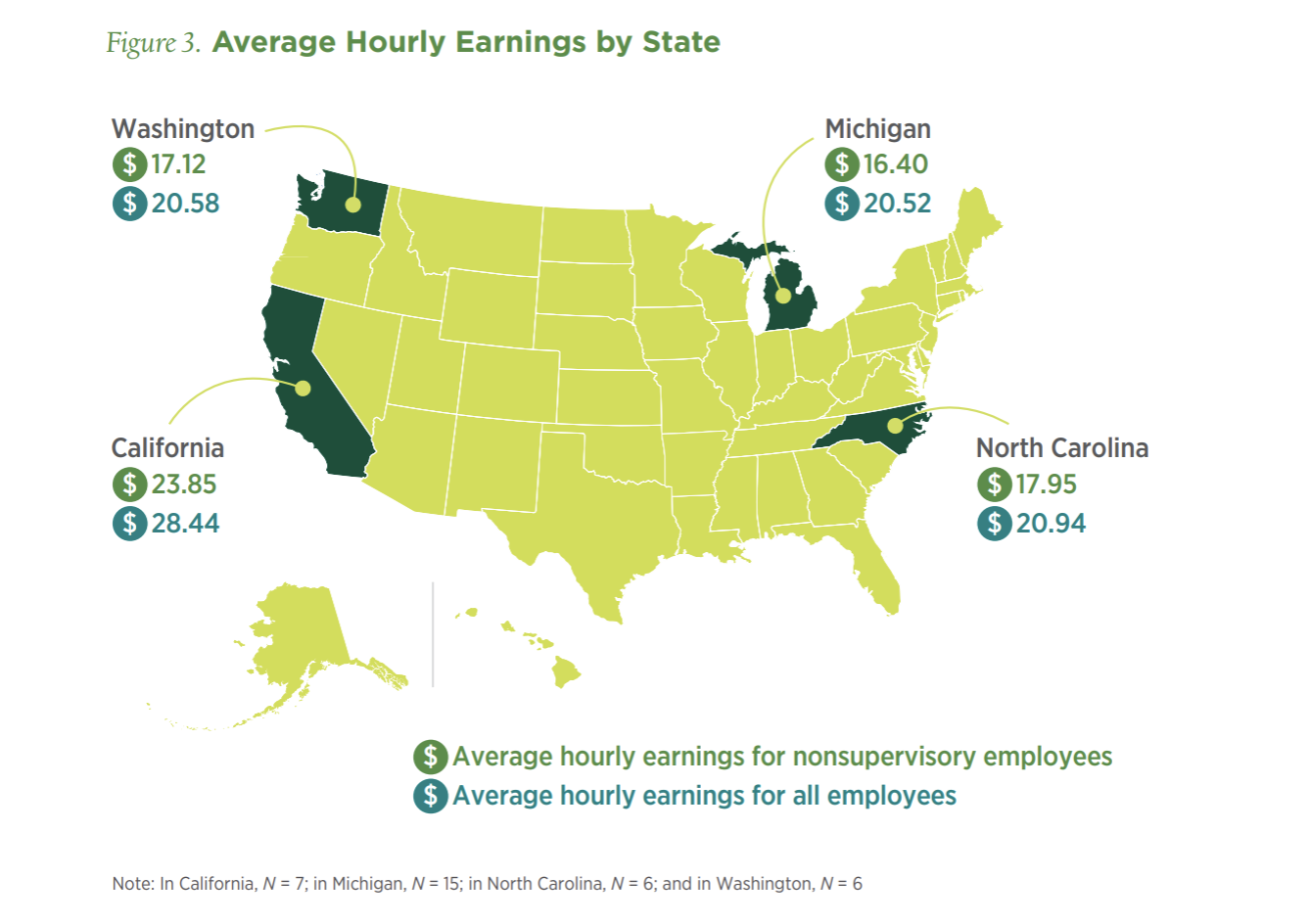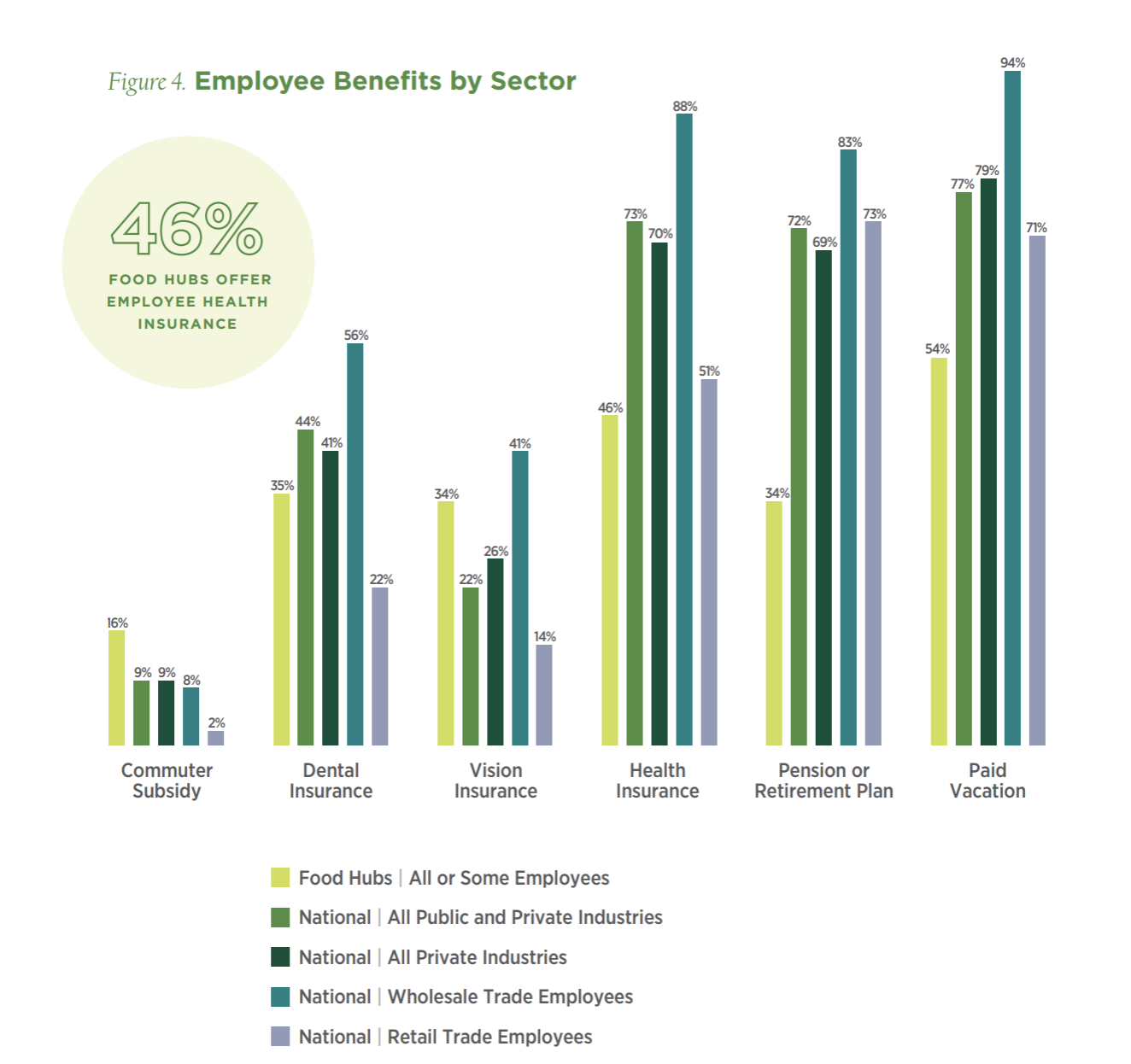Stacking Up: Comparing Food Hub Workers’ Wages and Benefits Similar to other Industries
DOWNLOADJanuary 22, 2024 - Noel Bielaczyc and Kathryn Colasanti
The National Food Hub Survey and other studies have closely examined the financial management of food hubs and their broader economic impact, but few studies have specifically looked at the wages and benefits of food hub workers. The 2021 National Food Hub Survey was the first iteration to include questions regarding the wages and benefits of food hub employees.
Stacking Up: Comparing Food Hub Workers’ Wages and Benefits presents data from the 2021 National Food Hub survey alongside national labor data for comparison purposes. The brief acknowledges that this is not a perfect comparison as the data is collected through different manners and there is a high level of differentiation in models for food hubs.
Wages were compared across industries for nonsupervisory employees and all employees. It was found that employees of food hubs make less than the average wage of other related jobs like wholesalers, truckers, and warehouse and storage employees. More data is needed to understand the regional variations in food wages and benefits.

Benefits were also considered for employees of food hub organizations compared to other sectors. While food hubs are competitive in offering vision and dental insurance, they trend well below the national average for health insurance, retirement plans, and paid vacation availability.

Among the organizations selecting hiring and retention as one of their top three challenges, 52% reported the inability to offer competitive wages and benefits as a barrier to staffing. While more data is needed to ensure a comprehensive picture of wages and benefits in food hub organizations, food hub employee compensation is an area of concern.
Download the file to explore the complete findings.
The National Food Hub Survey is a longitudinal research project conducted biennially since 2012. The 2021 National Food Hub Survey was conducted by CRFS in collaboration with the University of Michigan Program Evaluation Group (PEG) and the Wallace Center at Winrock International.
To further explore the data collected from the over 100 responses from across the country, CRFS and PEG developed two complementary briefs:



 Print
Print Email
Email




